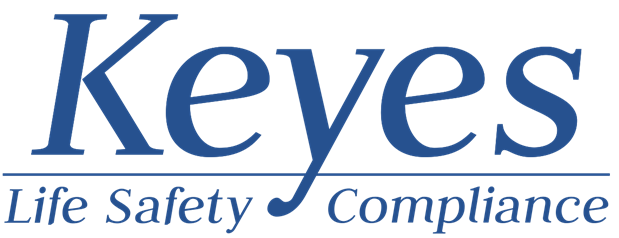
Your resource for expert Life Safety Code® and compliance insights.
Here you’ll find responses to readers' questions, interesting observations from the field, and more.
The world of healthcare compliance is constantly changing. Stay in the loop by subscribing to our free knowledge hub to get updates delivered right to your inbox.
Batteries Removed from EXIT Signs
That seems to be a surveyor’s preference and would violate the manufacturer’s recommendations.
Door Wedges
Section 19.3.6.3.10 of the 2012 Life Safety Code says corridor doors shall not be held open by devices other than those that release when the door is pushed or pulled.
Sprinklers in a Covered Walkway
There is a code that addresses sprinklers underneath canopies, which is NFPA 13-2010.
Oxygen Cylinder Storage
The requirement for the room that stores compressed medical gas cylinders comes from NFPA 99-2012, section 11.3.2 for quantities between 300 and 3,000 cubic feet of gas, and section 11.3.1 for quantities over 3,000 cubic feet of gas.
Smoke Alarms in Sleeping Rooms
If you are a hospital, then there is no requirement to have smoke detectors (or smoke alarms) in patient sleeping rooms.
1135 Waivers
The use of the 1135 waivers is dependent upon the healthcare occupancy declaring an emergency and invoking the 1135 waiver (in writing).
Fire Extinguisher Placement
Fire extinguishers shall be conspicuously located where they are readily accessible and immediately available in the event of fire.
Fire Damper Testing
Dampers must be documented that they closed properly upon installation, then 1 year after installation, then every 6 years thereafter for a hospital (every 4 years thereafter for non-hospitals).
Corrective Maintenance Work
The expectation is the organization will take appropriate and immediate action to resolve all deficiencies, and when they cannot be resolved the same day they are discovered then an ILSM assessment must be conducted.
PT Activity in Stairwells
You cannot use an exit enclosure (i.e. stairwell) for any purpose that has the potential to interfere with its use as an exit.
Red Bag Waste Containers
Federal OSHA BBP standard requires a biohazard label on all containers for biohazard waste.
Looking for something specific?
Search for a keyword, phrase, or topic to narrow in on related results or select from the tag list below.
- Alcohol
- Alcohol Based Hand Rub Dispensers
- Batteries
- Business Occupancies
- Ceilings
- Circuit Breaker
- Clean Supply Room
- Corridors
- Data Closets
- Door Locks
- Doors
- Electrical
- Electrical Receptacle
- Emergency Lights
- Emergency Power
- Environment of Care
- Evacuation
- Eyewash Stations
- Facilities Management
- Fire Alarms
- Fire and Smoke Dampers
- Fire Caulk
- Fire Detection Systems
- Fire Doors
- Fire Drills
- Fire Extinguishers
- Fire Response
- Fire Suppression Systems
- Fire Watch
- Flammable Liquids
- Generators
- Hazardous Areas
- Healthcare Occupancy
- Humidity
- HVAC
- Inspection
- Interim Life Safety Measure (ILSM)
- Joint Commission
- Life Safety Code
- Maintenance
- MRI
- Negative Air
- New Construction
- NFPA 99
- Operating Room
- Oxygen Cylinders
- Patient Rooms
- Power Strips
- Risk Assessment
- Shower Curtains
- Signs
- Smoke Barrier
- Smoke Detectors
- Smoking
- Sprinklers
- Stairwells
- Storage Room
- Temperature
- Testing
- Testing and Inspection
- Vacuum Pump
- Waivers
- Wall Decals
- Waste Containers
- What Happened
